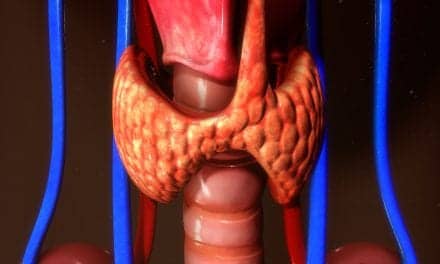By identifying who’s at risk of failing CPAP, such data could prompt clinicians to intervene for patients likely to face adherence challenges.
Interview by Alyx Arnett

Predicting patients at risk of CPAP non-adherence early in treatment would facilitate tailored interventions.
Artificial intelligence (AI) can accurately make this prediction, new research suggests. Researchers analyzed a dataset of CPAP usage from 21,397 subjects over several years and found AI models to accurately forecast adherence at three points: three months, six months, and a year into therapy. The models made the predictions quickly, within the first one to two weeks of treatment.
Such predictions would present an opportunity for sleep clinicians to intervene early, either reinforcing CPAP use or exploring alternative therapies for patients, says study author Chris Fernandez, MS, chief research officer at Ensodata.
Fernandez discussed the study, which was presented at SLEEP 2023 and is currently under peer review for publication, with Sleep Review over email.
[Editor’s Note: Read the abstract, Deep learning classification of future PAP adherence based on CMS and other adherence criteria, in Sleep.]
What inspired you to conduct this study?
While we know CPAP therapy is highly effective in the treatment of sleep apnea, we also know there are major challenges with long-term CPAP adherence. Our study aimed to identify how patterns of nightly CPAP monitoring data could be utilized by predictive models to identify patients with a future risk for therapy non-adherence. In doing so, we hope to create opportunities for clinicians, including sleep coaches and certified sleep health educators, to be able to provide behavioral and technical support for patients in a proactive and preventative way and, in turn, allow patients to not only feel more supported but also to maintain their CPAP use and experience greater success on CPAP therapy.
How might early prediction of adherence impact the overall treatment plan?
Early predictions of PAP adherence can impact the overall treatment plan for patients with sleep apnea by enabling a more adaptive, data-driven approach to patient outreach by the sleep clinicians who monitor and coordinate the care for patients on therapy. There are many reasons patients struggle on therapy, either initially or down the road. With the power of accurate predictive tools, we hope we can better understand the “why” of those struggles, create opportunities to bridge care gaps, and apply targeted coaching and behavioral intervention to help those patients realize better health outcomes.
How does this study build upon your previous work?
Our 2023 study, Deep learning to predict PAP adherence in obstructive sleep apnea, examined AI’s ability to classify patients’ CPAP usage into “behavioral phenotype” groups and predict future adherence for those groups. This study expands upon the scope in the original, featuring over 34,000 patients in the study sample. With this larger sample, we focused on evaluating the predictive AI model performance for making a determination on the patient’s forward-looking CPAP adherence, as defined by the Centers for Medicare and Medicaid Services (CMS) adherence criteria over multiple timescales (from as few as seven days, all the way up to continued use after one year).
What the data showed us was quite interesting. Within a patient’s first two weeks using their CPAP device, the data showed a receiver operating characteristic area under the curve (ROC-AUC) of 0.97 with over 90% sensitivity and 90% specificity for a patient’s 90-day CMS compliance. In other words, within the first one to two weeks of treatment, the predictive AI models have an accurate sense of who is likely to continue CPAP after the first 90 days and who is likely to struggle the most in that initial period.
If this predictive information were to be made accessible in remote patient and therapy monitoring applications, we believe clinical teams may be able to intervene and triage resources more quickly and dynamically.
How did the deep neural network models perform compared to previously used methods in predicting PAP adherence?
The predictive performance of the deep learning models in this study exceeded the performance of our prior models for predicting CMS compliance at three-month, six-month, and one-year increments, with ROC-AUC values peaking in the high 90s (ROC-AUC of 0.97). Overall, the models in the study demonstrated strong predictive performance for CPAP adherence at multiple timescales, with the strongest results being in the earliest phase of the patient journey on therapy, which prior studies have shown is one of the times when clinicians can have the greatest impact with timely interventions. These findings suggest a real opportunity for practical clinical utility of predictive tools to help support clinicians providing CPAP patient care.
Beyond that, this study suggests a significant, untapped potential for AI tools to provide even greater clinical value and utility in areas beyond patient diagnosis. By taking advantage of an increasing depth and breadth of data, and with that the ability to learn from even more complex, nuanced patterns and relationships, machine-learning models are uniquely suited to address the CPAP adherence challenges that impact millions of patients each year. With predictive tools, opportunities for clinicians to intervene before a patient has already failed CPAP therapy may be possible.
Were there any unexpected findings?
One relatively surprising finding was the speed of convergence in the accuracy of the AI model predictions as a function of time. Meaning, I was surprised that the algorithm was able to exceed both 90% in sensitivity and specificity for correctly predicting the CMS criteria for 90-day compliance, as early as only the first one to two weeks into the course of therapy. What that demonstrates is less about the AI directly and more that the very early experience a patient has on CPAP therapy is highly influential in the long-term course of their treatment.
In short, this indicates how critical it is to support patients just starting on CPAP therapy for the first time, to help make their early experience a good one, and the formation of healthy habits more approachable, all of which enable the patient’s long-term success on CPAP therapy.
What are the clinical implications?
This study shows promise for a more personalized care experience. When we talk about personalized-precision medicine, we talk a lot about data and aligning the right therapies for an individual’s particular symptoms and the phenotypic nature of their condition. However, we rarely talk about the more personal human experience—the highs and lows people go through on their medical journey.
We hope this study results in more widespread adoption of predictive clinical AI tools in the future, tools whose implications are greater adherence to existing therapies, greater utilization of alternative therapies, and ultimately a more personalized patient experience—as measured by the patient experience of when, how, and why clinicians reach out and offer support when individuals may be struggling. This care model could translate to more patients getting the right care at the right time, leading to a larger base of patients who feel supported and connected to their providers.
What are the future directions for this research?
Ongoing future work includes expanding the depth, breadth, and size of the data sets analyzed, introducing new predictive outputs to the AI models, and demonstrating AI model performance in prospective performance validation studies to understand the clinical benefits and clinical impact relative to traditional remote patient monitoring and care management paradigms. We hope to continue to find new applications and better understand how AI can best be designed to maximize clinical utility and positively influence patient outcomes.
Photo 49272493 © Jakub Krechowicz | Dreamstime.com





